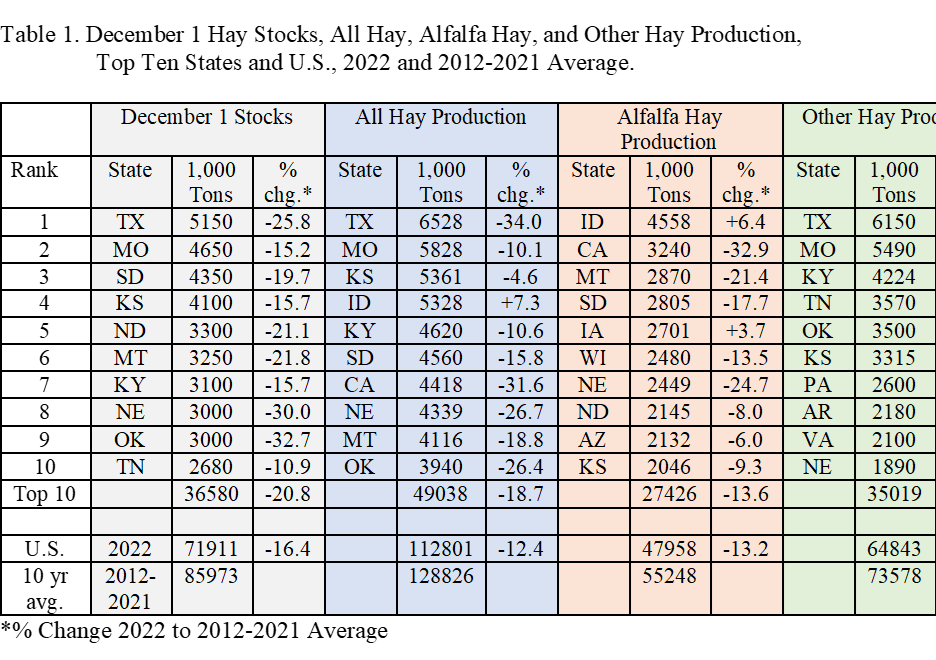Record Low Hay Stocks This Winter

Two years of drought have severely depleted U.S. hay stocks. The recently released December 1 hay stocks from USDA showed total stocks of 71.9 million tons, 16.4 percent below the previous ten-year average and the lowest December 1 stocks on record in the data back to 1973 (Table 1).
Each of the top ten states for hay stocks was down compared to the ten-year average and collectively were down 20.8 percent from the 2012-2021 average December 1 stocks level (Table 1). The largest hay stocks on December 1 were in Texas, 25.8 percent below the ten-year average for the state. Other top ten states were down from the ten-year average ranging from Tennessee, down 10.9 percent, to Oklahoma, down 32.7 percent (Table 1).

Table 1 also presents 2022 production of All Hay, Alfalfa Hay, and Other Hay for the U.S. and the top-ten states of each hay category. All hay production in 2022 was down 12.4 percent from the previous ten-year average, with alfalfa hay down 13.2 percent and other hay down 11.9 percent. Hay production in 2022 was the lowest on record in data that began in 1974. Total hay production in the top ten states combined represents 43 percent of U.S. total hay production and was down 18.7 percent compared to the ten-year average for those states. The top ten hay production states include eight of the top ten beef cow states along with the number one dairy cow state, California and the number three dairy cow state, Idaho.
The top ten state lists for alfalfa and other hay production indicates that alfalfa hay tends to be more important in the northern half of the country, along with California and Arizona, while other hay production is more important in the central and southern plains, mid-south and eastern seaboard. Kansas and Nebraska are the only two states that feature in the top ten lists for both alfalfa and other hay production.
Decreased December 1 hay stocks means that the cattle industry could face additional liquidation this winter and is particularly vulnerable to severe winter weather in the next couple of months. The December storm already will have taken a chunk out of the reported December 1 hay stocks. New forage production is several months away in the south and even farther away in northern regions.
A recent Rancher’s Thursday Lunchtime Webinar series focused on Wintering Cows with Limited Forage. Archived presentations from this series can be found at https://extension.okstate.edu/programs/beef-extension/ranchers-thursday-lunchtime-series/wintering-cows-with-limited-forage.html







